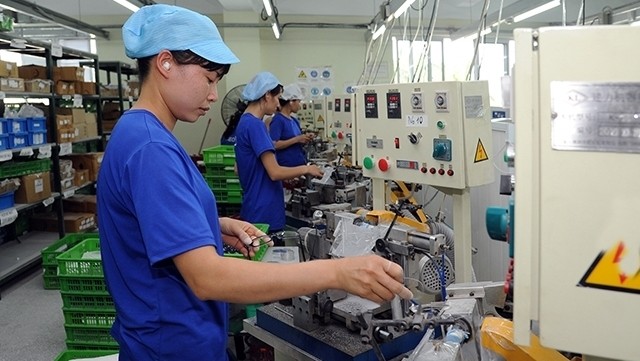He granted an interview to Nhan Dan (People) reporter to share his opinions on the prospects of FDI attraction in the near future.
Q: In 2016, Vietnam’s FDI disbursement reached a record high of US$15.8 billion. FDI capital has continued to increase in the first seven months of this year. How do you assess the capacity of FDI disbursement in the last months?
A: The FDI capital reached over US$9 billion in the first seven months of the year, an annual increase of 5.8%. In July alone, the country attracted numerous major projects, including the Nghi Son 2 thermal power plant, in Thanh Hoa province, which was invested in by Japan with a total investment capital of US$2.793 billion, in addition to Samsung Display Vietnam in Bac Ninh province with an added investment capital of US$2.5 billion. There are also a number of major projects under negotiation or memorandum. Therefore, this year, the total newly registered and supplemented capital, as well as capital contribution and share purchases, will be likely to increase significantly, reaching approximately US$30 billion and the implemented capital could reach US$17-US$18 billion.
In addition, it is estimated that Vietnam will attract approximately US$60 billion of implemented FDI, helping to partly offset the decline in ODA. Therefore, both FDI and ODA capitals will account for around 26%-27% of the country’s total investment demand – a positive level. Another encouraging signal is the growth, both in quantity and quality of the FDI inflows, as the processing and manufacturing industries account for nearly 60% of total FDI in Vietnam.
Q: Many economic experts say that with the advantages of political and economic stability, as well as deep international integration, Vietnam has become a bright spot in the region in attracting FDI. Do you think that this is a chance for the country to enhance FDI attraction?
A: According to research, the world’s investment market has rehabilitated over the past two years. The world’s FDI is forecast to increase by US$1.7 – US$1.8 trillion in 2017. Meanwhile, the FDI attraction in the countries surrounding Vietnam is unsatisfactory due to a number of reasons, including instability in politics and security. Vietnam’s FDI attraction is very promising not only this year but also for the next few years. However, we should not be too subjective as without new directions, as well as stronger reform, FDI attraction may not attain the expected results.
In my opinion, it is time to fundamentally change the directions for FDI attraction, based on three factors. Firstly, the Vietnamese economy has reached a relatively high level, requiring FDI capital of higher quality. Secondly, the country has approximately 620,000 domestic enterprises currently in operation, including numerous major businesses and groups, which are capable of undertaking works that have solely relied on the foreign investment sector in the past; therefore, choosing FDI capital should be astute and more cautious. Lastly, Vietnam should access the fourth industrial revolution. It can be seen that information technology, alongside many other future technologies, such as cloud computing are strongly developing in Vietnam. According to newly released data, Vietnam is leading among the ASEAN countries in investing in cloud computing. With more favourable conditions, the country should also be more proactive in joining the industrial revolution. Many experts have said that there will be a great opportunity for Vietnam to catch up with the development level of advanced countries in the region, if the country sets new directions for FDI attraction, focusing on a higher quality source of capital and future technologies and service.
Q: In addition to the changes in direction, what should the relevant agencies do in order to continue to enhance the efficiency in FDI attraction?
A: Managers should reform their thinking and work more drastically to fundamentally change and enhance State management and corporate governance, in particular creating conditions for individuals and enterprises to become deeply involved in the State’s activities. In addition, it is essential to boost the investment for high quality human resources through reformation in the education system.
Furthermore, management agencies need to set out the necessary policies and mechanisms to encourage new ideas and initiatives, in addition to using resources, and the gray matter of Vietnamese citizens both in the country and abroad, as well as international resources from foreign investment and technology transfer, in an effective manner.
Thank you very much for your interview!
| Vietnam had 1,378 newly licensed FDI projects with total registered capital of US$12.92 billion as of July 20, up 48.7% over the same period last year. Out of the projects, 677 registered to adjust their capital with supplemented capital of US$5.87 billion, an annual increase of 38.5%; 2,946 capital contribution and share purchases has a total value of US$3.12 billion, up 109.7% over the same period of 2016. In the first seven months of 2017, the total newly registered and supplemented capital, as well as capital contribution and share purchases, were US$21.93 billion, an annual increase of 52%. |
















